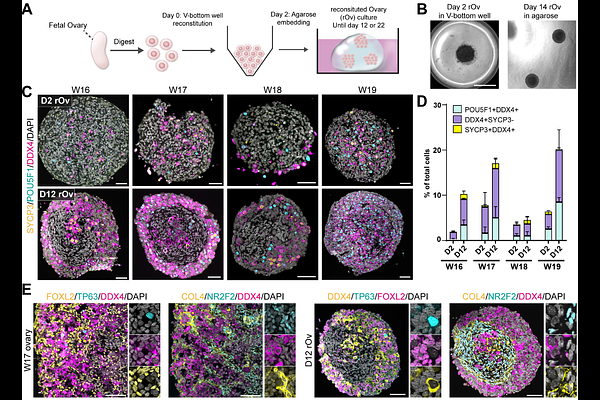Reconstitution of human fetal ovaries reveals niche requirements for primordial germ cell-like cell progression

Reconstitution of human fetal ovaries reveals niche requirements for primordial germ cell-like cell progression
Chang, Y. W.; Trimp, M.; van der Helm, T.; Blanch-Asensio, A.; Overeem, A. W.; Chuva de Sousa Lopes, S. M.
AbstractHuman primordial germ cell-like cells (hPGCLCs) can be specified from human induced pluripotent stem cells (hiPSCs), offering a valuable model for human germ cell development. However, further maturation steps of hPGCLCs rely on mouse feeders, or co-culture with mouse gonadal somatic cells. Exposure of hPGCLCs to human embryonic niche has not been attempted. Here, we co-cultured female hPGCLCs in two distinct somatic compartments. In reconstituted ovary (rOv) culture, human fetal germ cells proliferate and initiate meiosis, while hPGCLCs upregulate gonadal germ cell markers such as DDX4. Additionally, hPGCLCs can be supported in 3D culture by the amnion-like cells (AMLC) generated during PGCLC differentiation. Compared to rOV, hPGCLCs are less prone to dedifferentiation in PGCLC/AMLC aggregates. Finally, we demonstrated that SCF is crucial for the survival of hPGCLCs but not second trimester fetal germ cells. Together, this work highlights a shift in niche is required in human germ cell development.